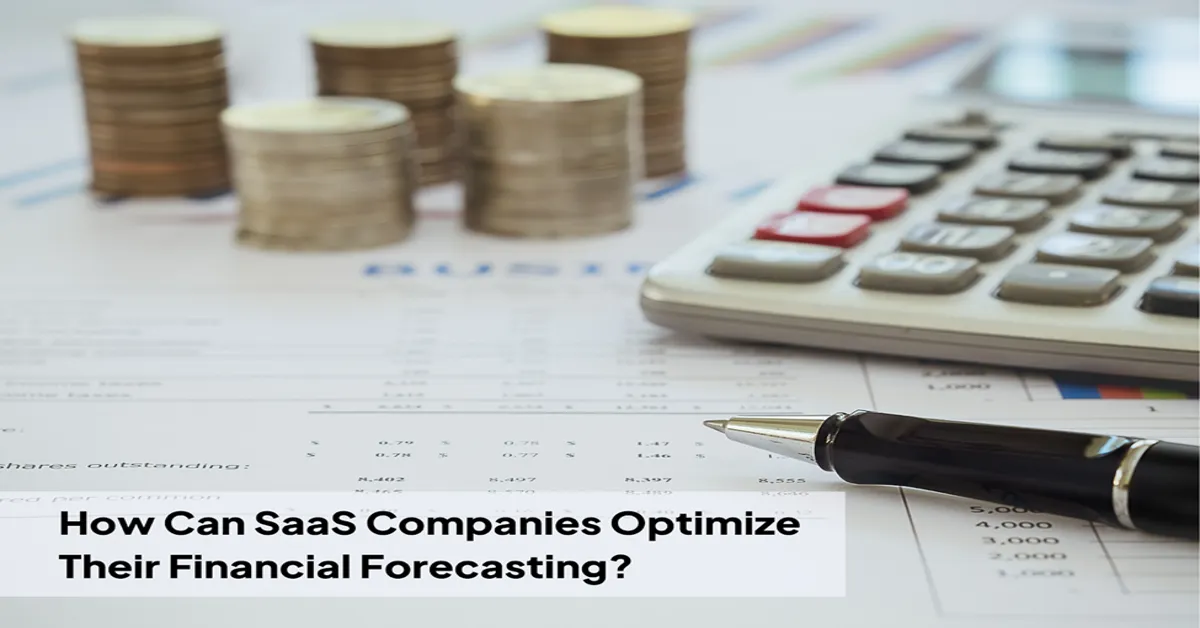Accurate financial forecasting is essential for SaaS companies looking to enhance operational efficiency and drive sustainable growth. Leveraging advanced forecasting techniques enables businesses to anticipate revenue streams, manage cash flow, and make strategic decisions with confidence.
In this blog, we’ll explore advanced models, critical metrics, SaaS tool integration, and best practices, while addressing common challenges to help you optimize financial forecasting.
Why Financial Forecasting Matters in SaaS
Financial forecasting serves as the backbone of a successful SaaS business strategy. It provides a roadmap for informed decision-making, enabling companies to:
- Anticipate Revenue Streams: Predict recurring revenue from subscription-based models and identify trends.
- Manage Cash Flow: Ensure sufficient funds are available for operational expenses and growth initiatives.
- Identify Growth Opportunities: Leverage data insights to recognize emerging market demands and adapt strategies.
When it comes to Accounting for saas companies, accurate forecasting plays a crucial role in aligning financial goals with operational strategies. By fostering alignment across departments from finance to marketing it creates a unified approach to achieving company objectives.
The Cost of Inaccurate Forecasting
Poor forecasting can lead to:
- Missed growth opportunities.
- Overextension of resources.
- Financial instability due to under- or overestimating cash flow needs.
Investing in accurate forecasting isn’t just a financial imperative; it’s a competitive advantage.
Key Metrics to Track for SaaS Forecasting
To build reliable financial forecasts, SaaS businesses must monitor and analyze specific metrics. Here are the critical ones:
- Monthly Recurring Revenue (MRR):
- Provides a clear view of predictable income.
- Helps in assessing growth trends over time.
- Customer Churn Rate:
- Measures the percentage of customers discontinuing their subscriptions.
- High churn rates indicate potential issues with product satisfaction or value.
- Customer Acquisition Cost (CAC):
- Reflects the cost of acquiring new customers.
- Helps determine the efficiency of sales and marketing efforts.
- Customer Lifetime Value (CLTV):
- Predicts the total revenue generated by a customer over their entire relationship with your business.
- A higher CLTV relative to CAC signals sustainable growth.
- Net Revenue Retention (NRR):
- Evaluates revenue growth from existing customers through upsells, cross-sells, and renewals.
- A strong NRR (>100%) shows that your business can grow even without new customer acquisition.
Understanding these metrics lays the foundation for advanced forecasting models. Let’s explore how these models can provide deeper insights.
Advanced Forecasting Models
Sophisticated forecasting models allow SaaS businesses to enhance accuracy and adaptability. These include:
1. Cohort Analysis
- Focuses on grouping customers based on shared characteristics or behaviors over a specific timeframe.
- Enables businesses to analyze customer retention trends and lifetime value.
2. Usage-Based Forecasting
- Ideal for SaaS companies with variable pricing models.
- Predicts revenue based on customer usage patterns, ensuring scalable pricing strategies.
3. Scenario Planning
- Involves creating multiple scenarios (best-case, worst-case, and baseline) to prepare for different market conditions.
- Empower businesses to respond proactively to economic changes.
The true value of advanced forecasting models lies in their ability to guide strategic decisions. Next, we’ll examine how SaaS tools enhance these efforts.
| SaaS Tool | Key Features | Best For | Pricing |
| Financial Planning | Budgeting, scenario planning | CFOs, financial analysts | Tiered subscriptions |
| Revenue Forecasting | Sales tracking, predictive analytics | Sales and business development | User-based or flat-rate |
| Subscription Analytics | MRR/ARR tracking, churn analysis | SaaS startups, subscription businesses | Flat monthly fee |
| ERP Systems | Centralized data, workflow automation | Scaling businesses | Usage-based or enterprise |
| Accounting Tools | Invoicing, tax calculations | Small to medium businesses | Free trial, then tiered |
| Forecasting Tools | AI-based predictions, trend analysis | Enterprises in volatile markets | Pay-as-you-go or annual |
Integrating SaaS Tools for Streamlined Forecasting
Integrating SaaS tools into financial workflows is essential for efficiency and accuracy. Here’s how to get started:
Step 1: Centralize Financial Data
- Use cloud-based platforms to consolidate financial data from disparate sources.
- Ensure all departments have access to a single source of truth.
Step 2: Automate Calculations
- Reduce manual errors by leveraging tools that handle complex computations and projections.
- Automate recurring processes like revenue forecasting and churn analysis.
Step 3: Train Teams on Tools
- Provide training sessions to ensure employees understand and utilize these tools effectively.
- Regularly update training materials as tools evolve.
Expected Results from SaaS Forecasting
Adopting SaaS tools for financial forecasting offers numerous benefits that can transform business operations. These tools enhance accuracy by providing real-time data access, reducing errors, and ensuring projections are always aligned with current conditions. They also foster enhanced collaboration by enabling teams to share insights seamlessly and align strategies, creating a more unified and productive work environment.
Additionally, SaaS tools are highly scalable, allowing businesses to adapt to growth and increasing complexity without disrupting workflows, ensuring a smooth transition as the company expands.
Overcoming Challenges in Financial Forecasting
While SaaS tools simplify forecasting, challenges still exist. Address these proactively:
1. Data Quality
- Regularly audit and update your data to maintain accuracy.
- Implement validation checks to ensure data integrity.
2. Economic Volatility
- Build flexibility into forecasting models to account for unpredictable market changes.
- Use scenario planning to prepare for various economic conditions.
3. Scalability
- Select tools and models designed to grow your business.
- Ensure your team is equipped to handle increased data complexity.
To overcome these challenges, adopting best practices is essential. Let’s explore how to refine your forecasting strategies further.
Best Practices for SaaS Financial Forecasting
To ensure sustained success, incorporate these best practices into your financial forecasting strategy:
| Best Practice | Description |
| Scenario Planning | Prepare for multiple outcomes, including best-case, worst-case, and most-likely scenarios. |
| Continuous Monitoring | Regularly compare forecasted data with actual performance and refine forecasting models based on deviations. |
| Cross-Department Collaboration | Involve teams from sales, marketing, and product to ensure comprehensive forecasting aligned with company-wide goals. |
FAQs
1. Why is financial forecasting critical for SaaS businesses?
Financial forecasting helps anticipate revenue, manage cash flow, and make informed strategic decisions, ensuring sustained growth.
2. What metrics are essential for SaaS forecasting?
Key metrics include MRR, churn rate, CAC, CLTV, and NRR. These metrics provide actionable insights into financial performance.
3. How can SaaS tools improve forecasting accuracy?
By centralizing data, automating processes, and providing real-time insights, SaaS tools enhance the reliability and efficiency of financial forecasts.
Conclusion
Accurate financial forecasting is vital for SaaS companies to drive growth and efficiency. By tracking key metrics, leveraging advanced models, and integrating SaaS tools, businesses can streamline operations and make data-driven decisions. Overcoming challenges like data quality and scalability ensures forecasts remain reliable and actionable, giving companies a competitive edge in the dynamic SaaS market.







